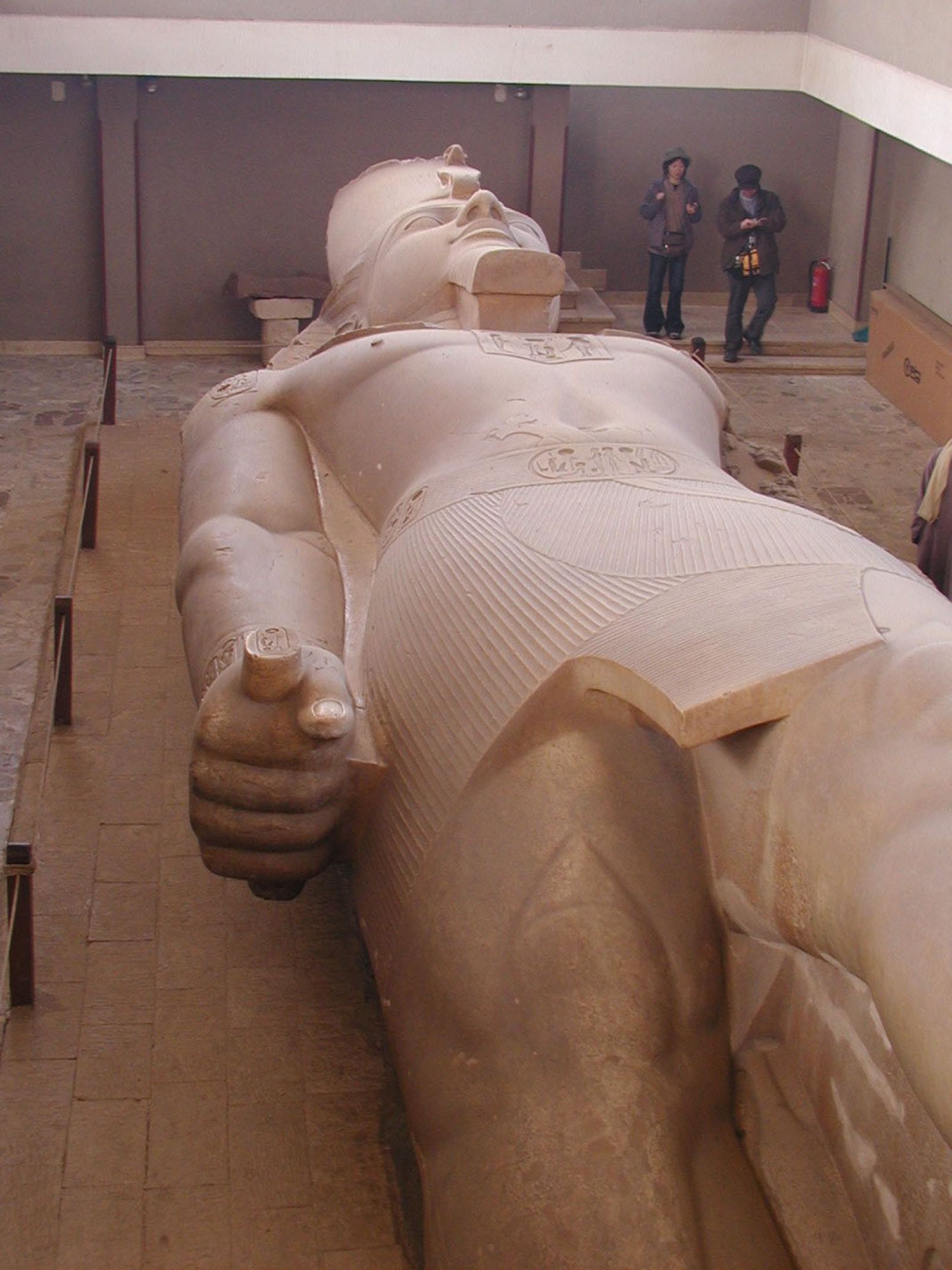Follow us on Google News (click on ☆)
Ramses II ascended to the throne upon the death of his father, Seti I, immediately plunging into conflict with the Hittites (people occupying modern-day Turkey). The Battle of Kadesh, often presented as an Egyptian victory, is now seen by historians as a stalemate. This period of war eventually gave way to lasting peace, sealed by Ramses II's marriage to a Hittite princess.

Monumental statue of Ramses II, found near the vanished southern pylon of Ptah's enclosure in Memphis.
The construction of Pi-Ramesses, a new capital adorned with colossal statues in his likeness, testifies to his ambition. This city reflected the grandeur of his reign. Ramses II thus permanently marked the Egyptian landscape.
Upon his death, Ramses II was buried in the Valley of the Kings, but his mummy was moved to protect it from looters. Modern analyses reveal he suffered from arthritis and dental problems, though the exact cause of his death remains unknown. His exceptional longevity for the time, around 90 years, is testament to his robustness.
Ramses II's succession was ensured by his thirteenth son, Merneptah, without apparent conflict. However, subsequent generations experienced internal struggles, weakening the dynasty. The invasions of the Sea Peoples exacerbated these tensions, leading to a gradual decline in royal power.
The cult of Ramses II endured long after his death, with traces of veneration continuing into the Ptolemaic period a millennium later. His cultural and architectural legacy continues to fascinate, making him one of the most studied and celebrated pharaohs in Egyptian history.
Who were the Sea Peoples?
The Sea Peoples were a group that threatened Egypt and other Mediterranean civilizations at the end of the Bronze Age. Their exact origins remain debated, but they are often associated with mass migrations and social upheavals.
Their attacks coincided with a period of decline for several major powers, including Egypt. Egyptian inscriptions describe fierce battles against these invaders, without always specifying their origin.
Some scholars suggest the Sea Peoples might be related to groups like the Philistines, known from the Bible. Their impact on the region was so profound that it marked the end of the Bronze Age in several cultures.
How were Egyptian mummies preserved?
Mummification was a process aimed at preserving the body for the afterlife. Internal organs were removed and stored separately, except for the heart, considered the seat of the soul.
The body was then treated with natron, a natural salt, to dry it out. This stage could last up to seventy days, depending on religious beliefs and family means.
Finally, the body was wrapped in linen bandages, often accompanied by protective amulets. These practices reflect the importance placed on the afterlife in ancient Egyptian culture.